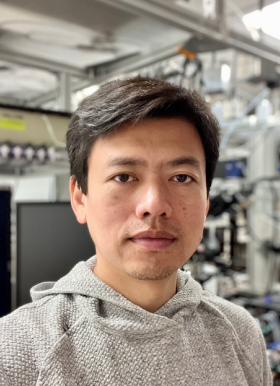The Department of Neuroscience is pleased to announce the appointment of Cheng Huang, PhD, as an Assistant Professor. Huang is regarded for his innovative methods to study the neural circuitry involved in memory formation and retrieval and his application of these techniques to identify how the brain learns new information. He joins the department from Stanford University, where he was a postdoctoral fellow and research scientist in the lab of Mark Schnitzer, PhD.

“Dr. Huang has developed new technologies that have pushed the limits of monitoring neural activity in vivo and applied them to pressing questions about memory encoding and retrieval,” said Linda Richards, PhD, Edison Professor of Neuroscience and Chair of the Department of Neuroscience at Washington University School of Medicine. “He brings a wealth of new approaches, technologies and skills that will add tremendous value to WashU’s neuroscience community.”
Huang received his BS and MS degrees from the Beijing Institute of Technology in China, where he studied Bioengineering and Biochemistry & Molecular Biology. For his PhD at Tsinghua University, Huang investigated the role of protein degradation in long-term memory consolidation in Drosophila. He identified an enzyme that blocks long-term memory, and proposed the idea that it filters unimportant information from forming long-lasting memories.
In the Schnitzer Lab, Huang led the development of novel voltage indicators, known as Ace2N-mNeonGreen and VARNAM, that signal neuron activity with incredible precision—and all in awake, behaving flies. To allow for long-term imaging using these indicators, Huang invented a laser-based microsurgery technique to implant a transparent observation window over the fly brain. He could then collect imaging data from multiple sessions over the course of weeks, even the entire lifespan of adult fruit flies. The method has opened up opportunities for chronic monitoring that hadn’t been possible before and Huang has applied it to studying the dynamics of neural circuits during learning.
At WashU, Huang is extending his research on learning to understand the role of dopamine-producing neurons in the brain during memory formation, such as in representing sensory, motor or contextual information. The Huang Lab is also investigating memory storage distributed across multiple brain regions. There are major outstanding questions regarding how such widespread memory units are integrated to produce appropriate decisions and behaviors, and Huang’s team has set out to identify where memories are stored and how their downstream networks coordinate.
“I’m super excited and honored to join the Department of Neuroscience at WashU,” said Huang. “The world-class resources, the outstanding scientific community, and the collaborative and supportive culture of WashU all make here an exceptional place to establish a stellar career. I truly can’t think of a better environment to pursue my scientific dreams in fundamental neuroscience.”